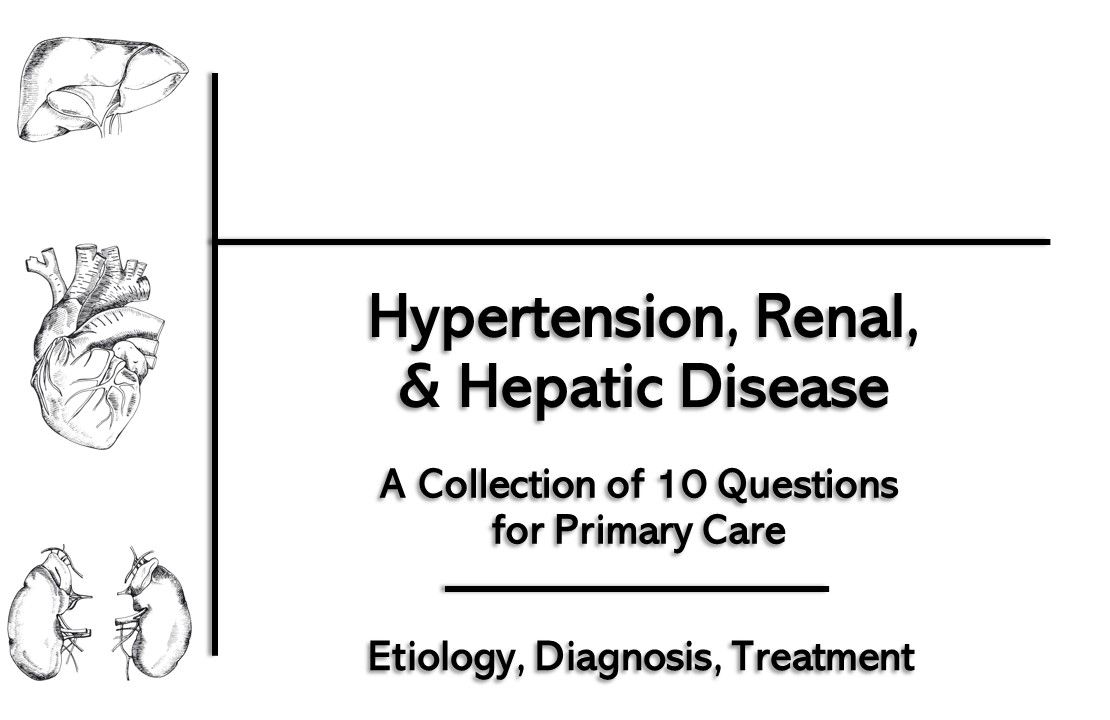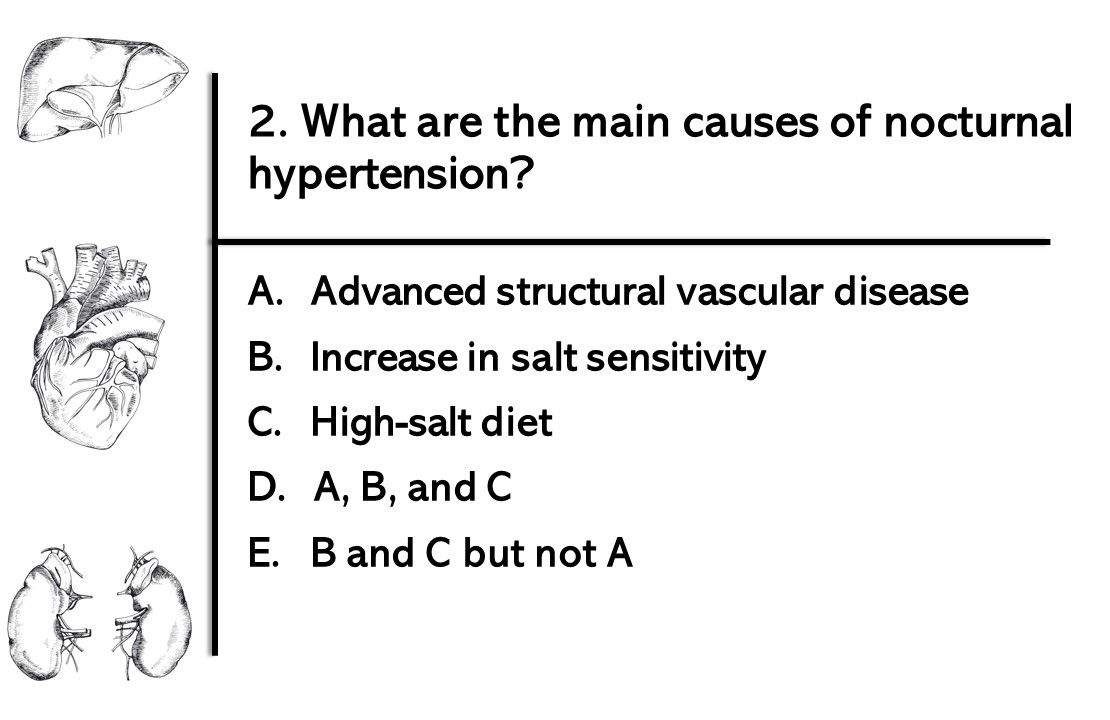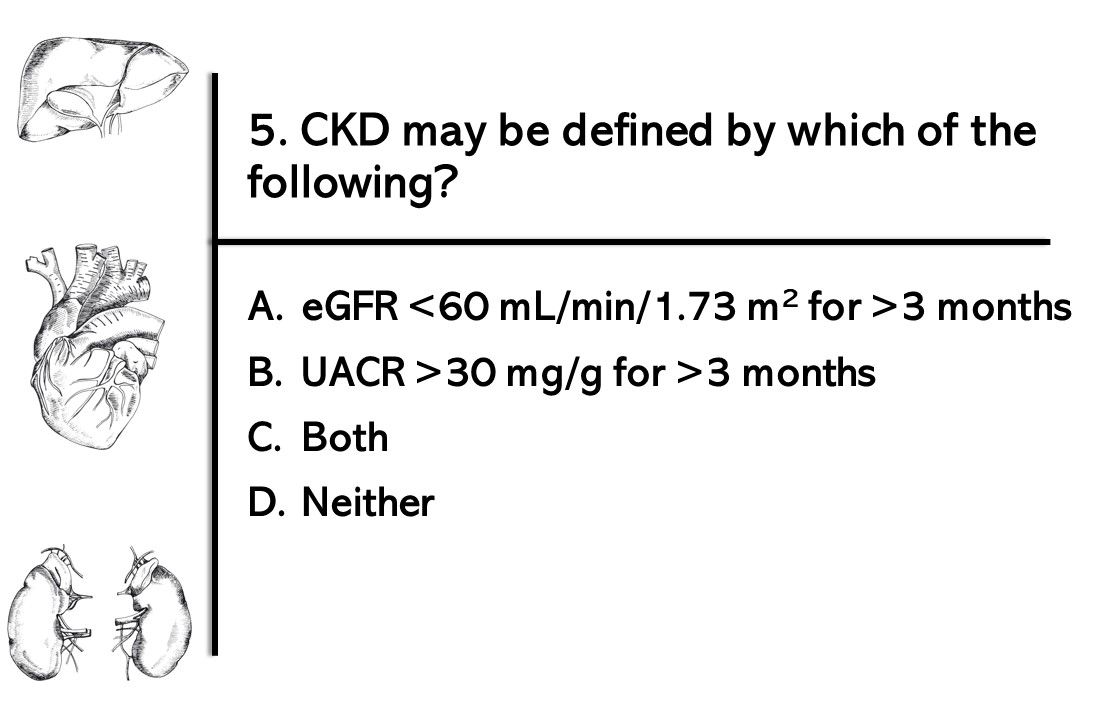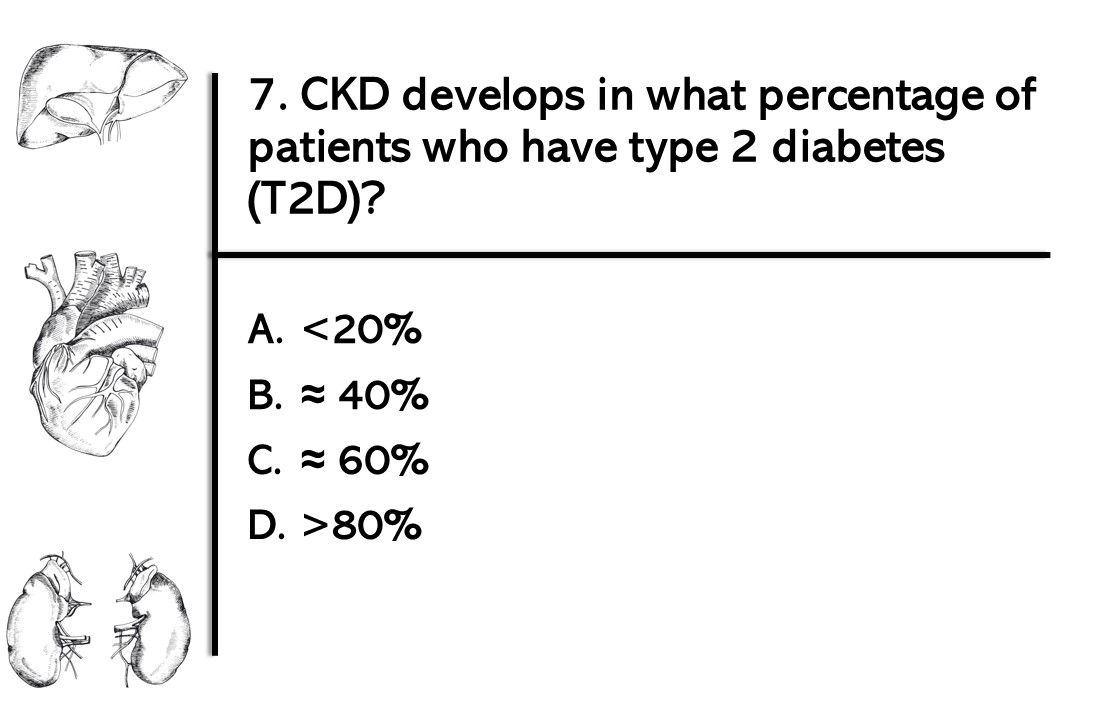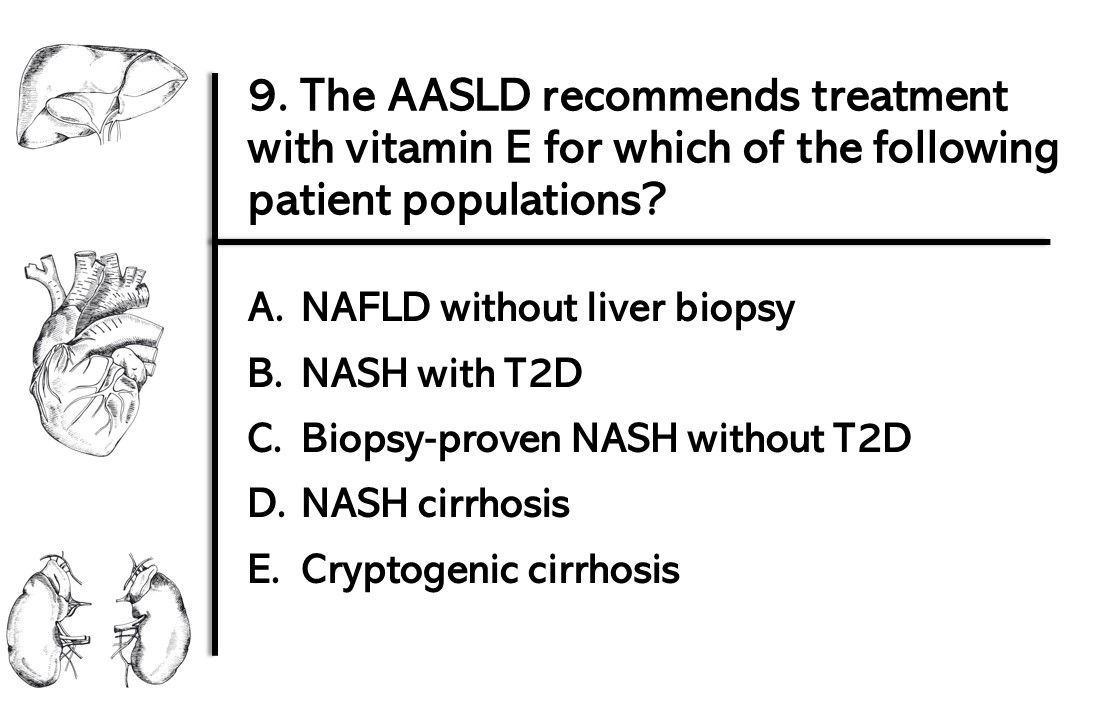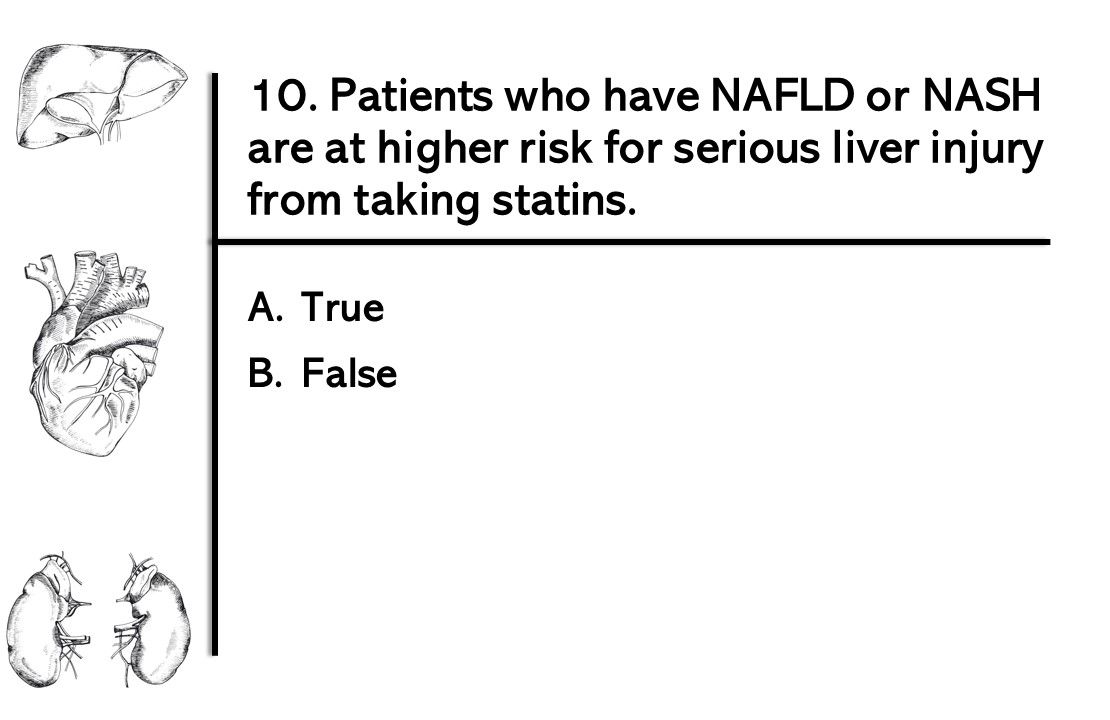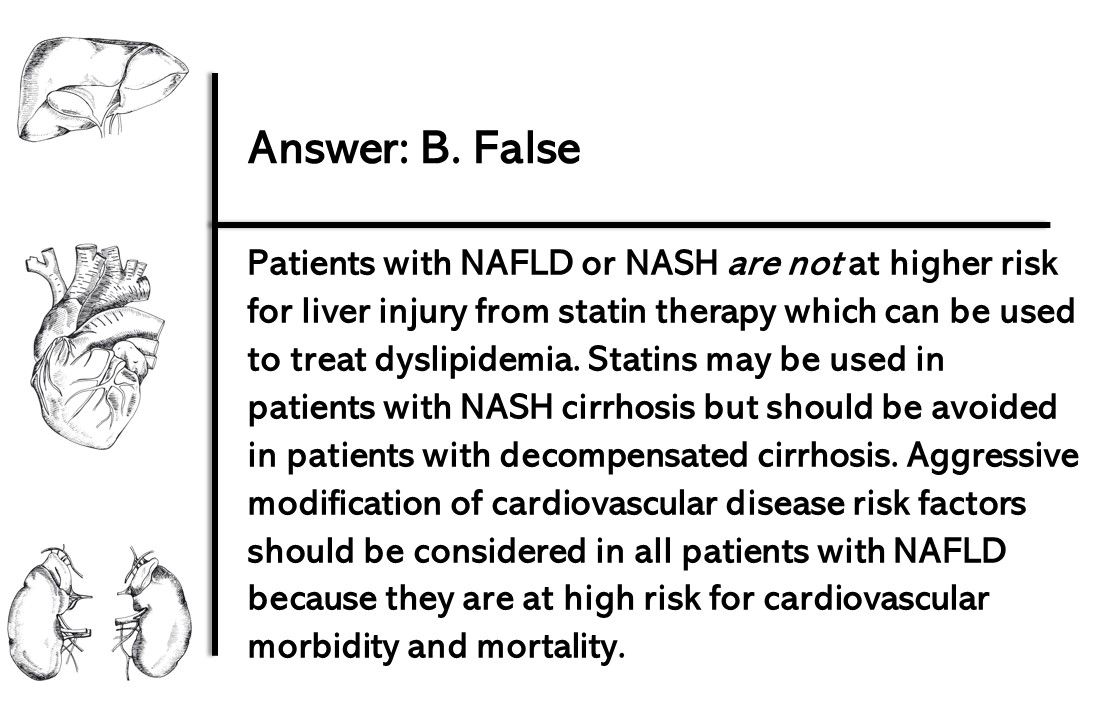© 2025 MJH Life Sciences™ , Patient Care Online – Primary Care News and Clinical Resources. All rights reserved.
Hypertension, Renal, & Hepatic Disease: A 10-question Collection for Primary Care
Hypertension, chronic kidney disease, and NAFLD/NASH are frequently first diagnosed in primary care. Try these 10 questions on diagnosis and treatment of all 3.
Hypertension, chronic kidney disease, and NAFLD/NASH are linked by numerous underlying metabolic pathways and often seen together in primary care patients.
As part of our cardiometabolic disease clinical topic area, this set of questions draws on several previous Patient Care quizzes you may have taken. Consider this one a review. Good luck.
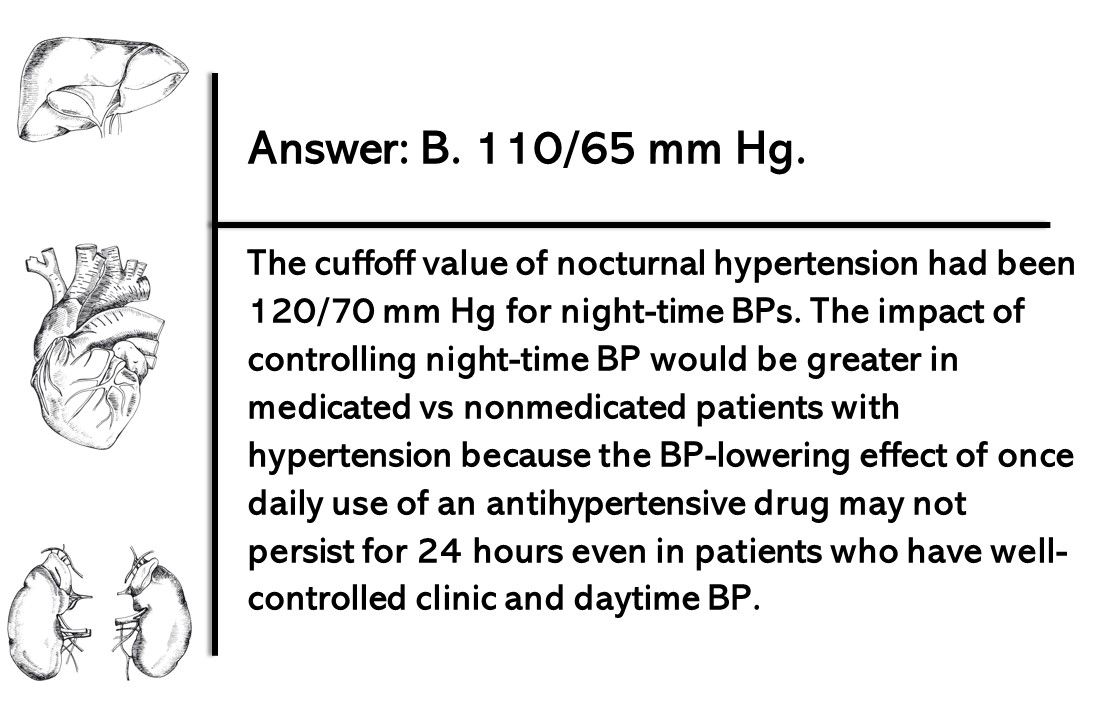
Answer: B. 110/65 mm Hg. The cuffoff value of nocturnal hypertension had been 120/70 mm Hg for night-time BPs. The
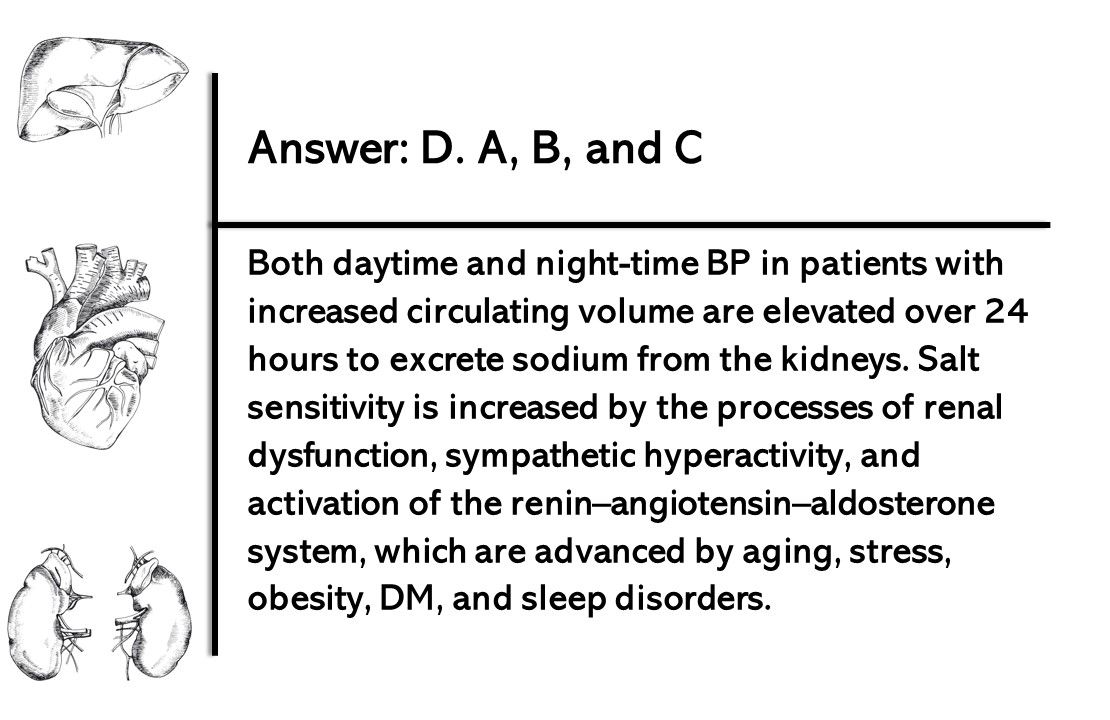
Answer: D. A, B, and C. Both daytime and night-time BP in patients with increased circulating volume are elevated over 24 hours to excrete sodium from the kidneys. Salt sensitivity is increased by the processes of renal dysfunction, sympathetic hyperactivity, and activation of the renin–angiotensin–aldosterone system, which are advanced by aging, stress, obesity, DM, and sleep disorders.
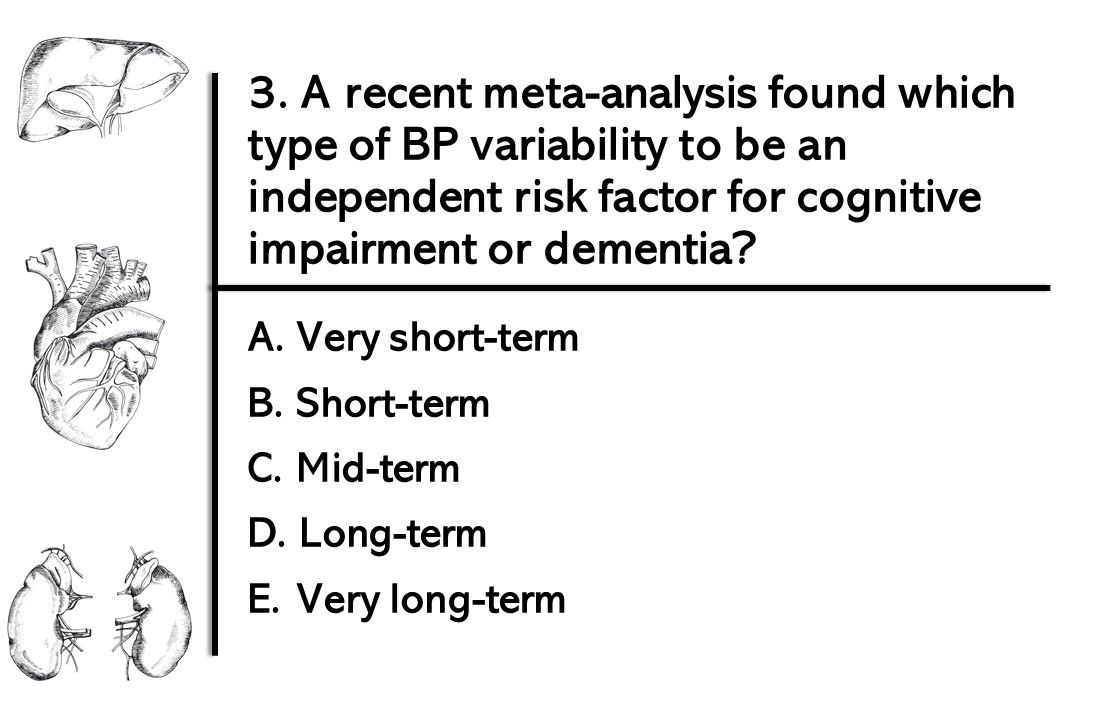
3. A recent meta-analysis found which type of BP variability to be an independent risk factor for cognitive impairment or dementia?
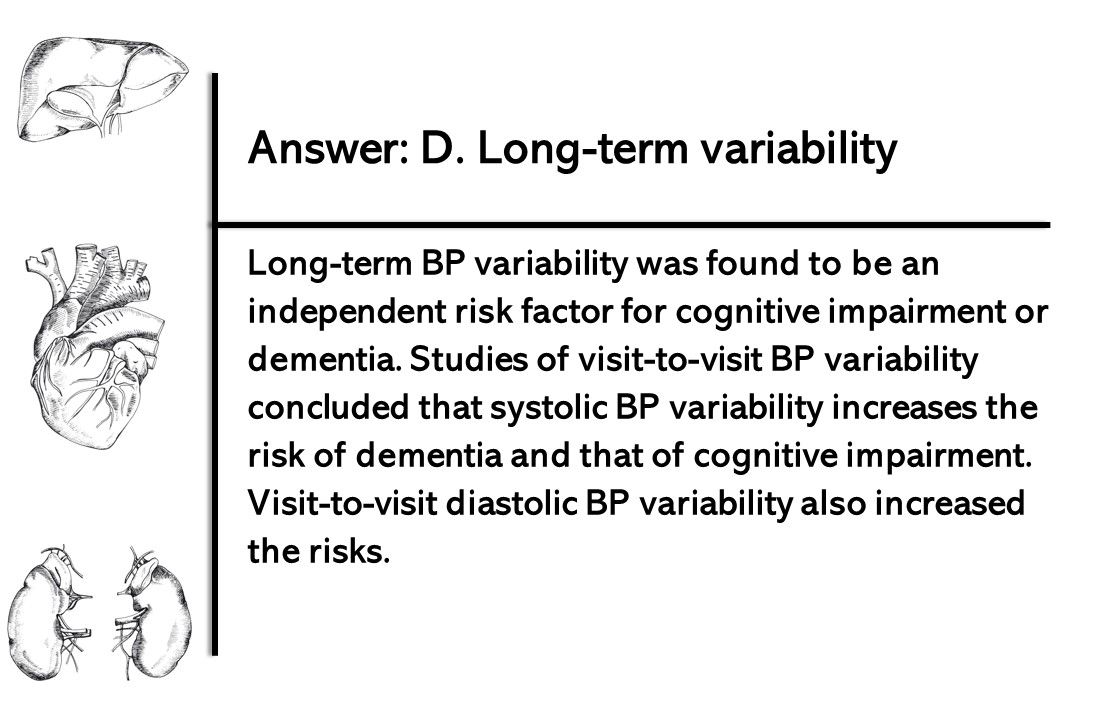
Answer: D. Long-term variability. Long-term BP variability was found to be an independent risk factor for cognitive impairment or dementia.
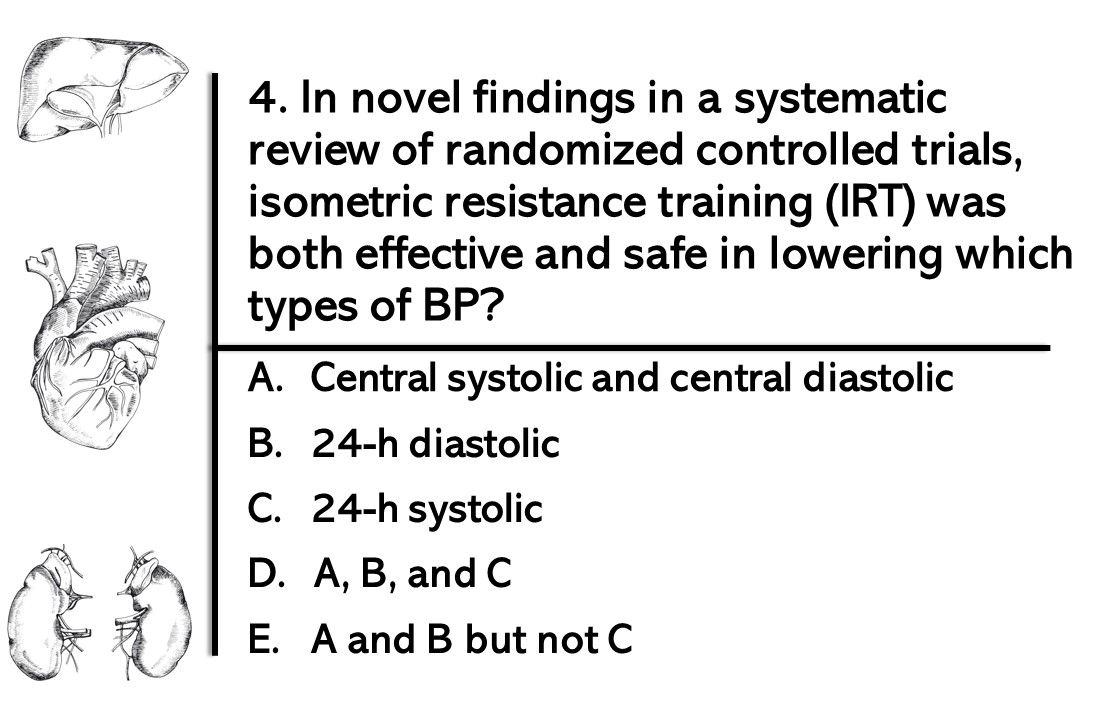
4. In novel findings in a systematic review of randomized controlled trials, isometric resistance training (IRT) was both effective and safe in lowering which types of BP?

Answer: E. A and B but not C. IRT resulted in clinically meaningful reductions in office systolic and office diastolic BP and appeared to be safe. Novel findings included reductions in central systolic, central diastolic, and 24-h diastolic BP but not 24-h systolic BP.
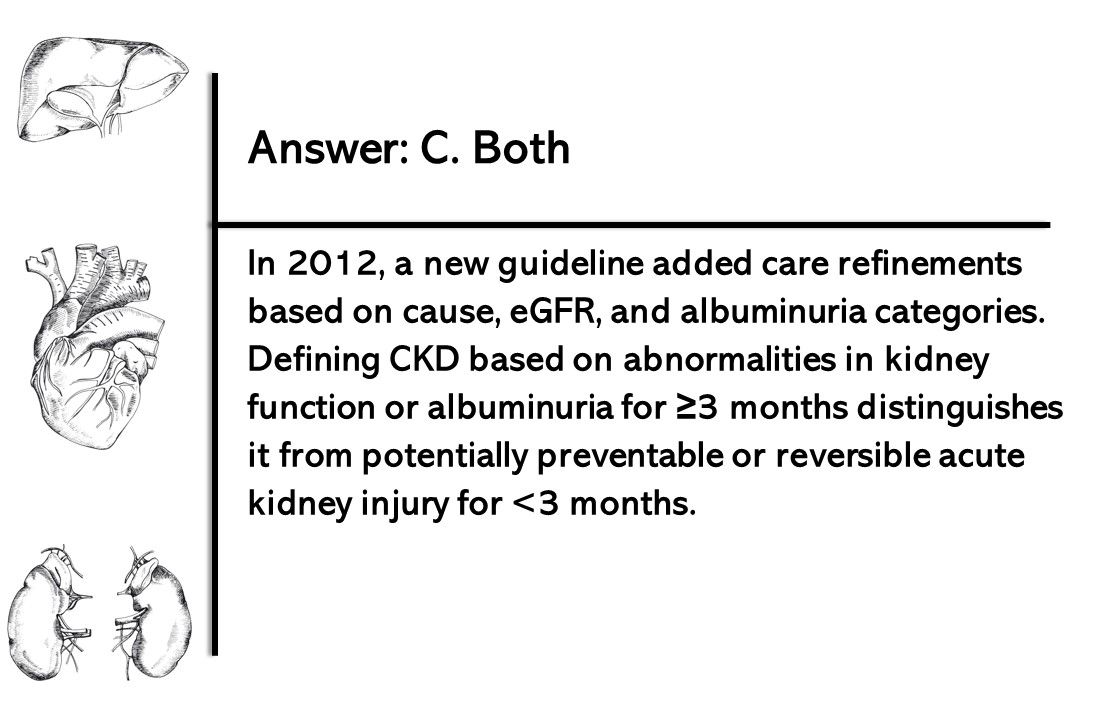
Answer: C. Both. In 2012, a new guideline added care refinements based on cause, eGFR, and albuminuria categories. Defining CKD based on abnormalities in kidney function or albuminuria for ≥3 months distinguishes it from potentially preventable or reversible acute kidney injury for <3 months.
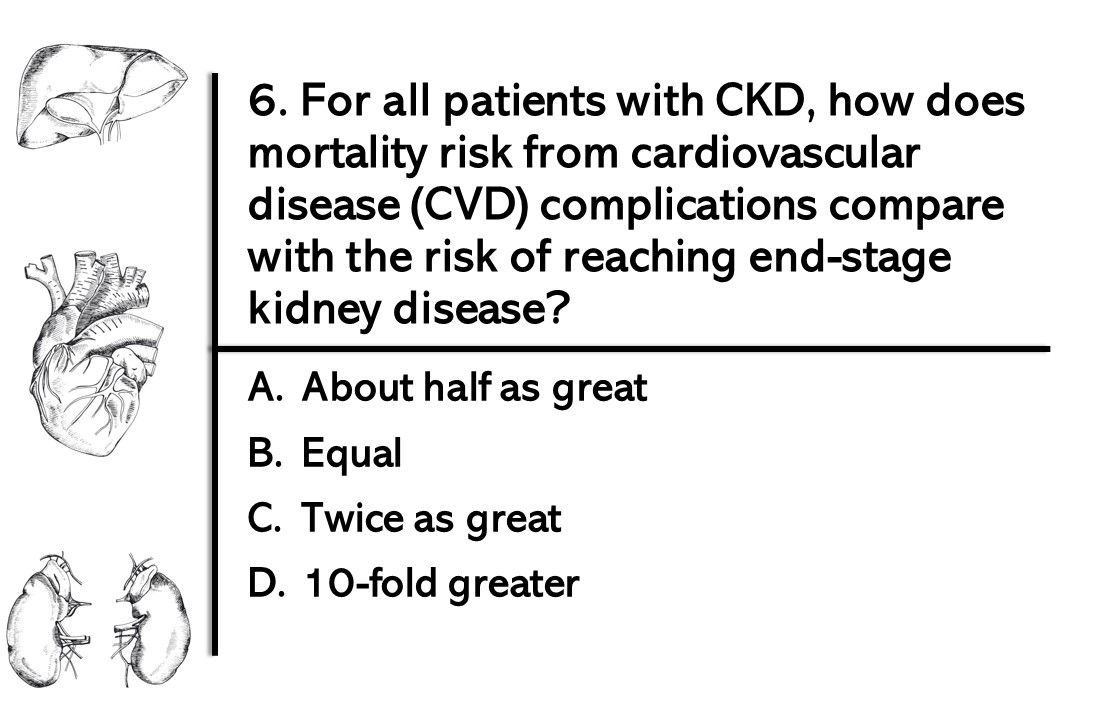
6. For all patients with CKD, how does mortality risk from cardiovascular disease (CVD) complications compare with the risk of reaching end-stage kidney disease?
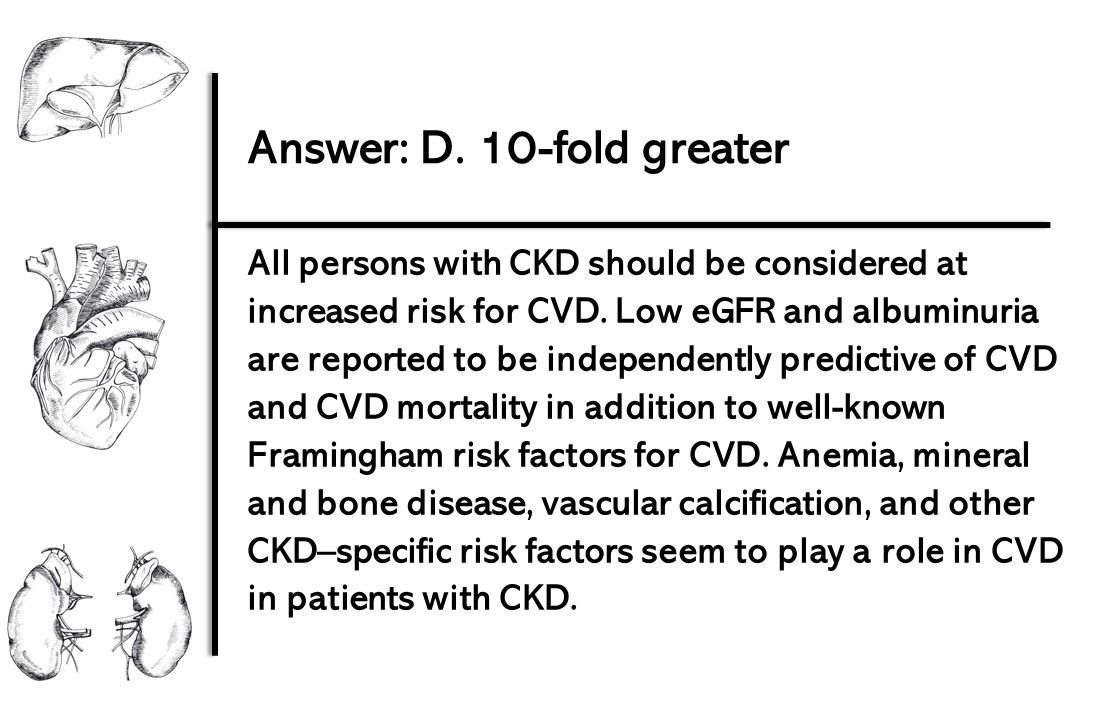
Answer: D. 10-fold greater. All persons with CKD should be considered at increased risk for CVD. Low eGFR and albuminuria are reported to be independently predictive of CVD and CVD mortality in addition to well-known Framingham risk factors for CVD.
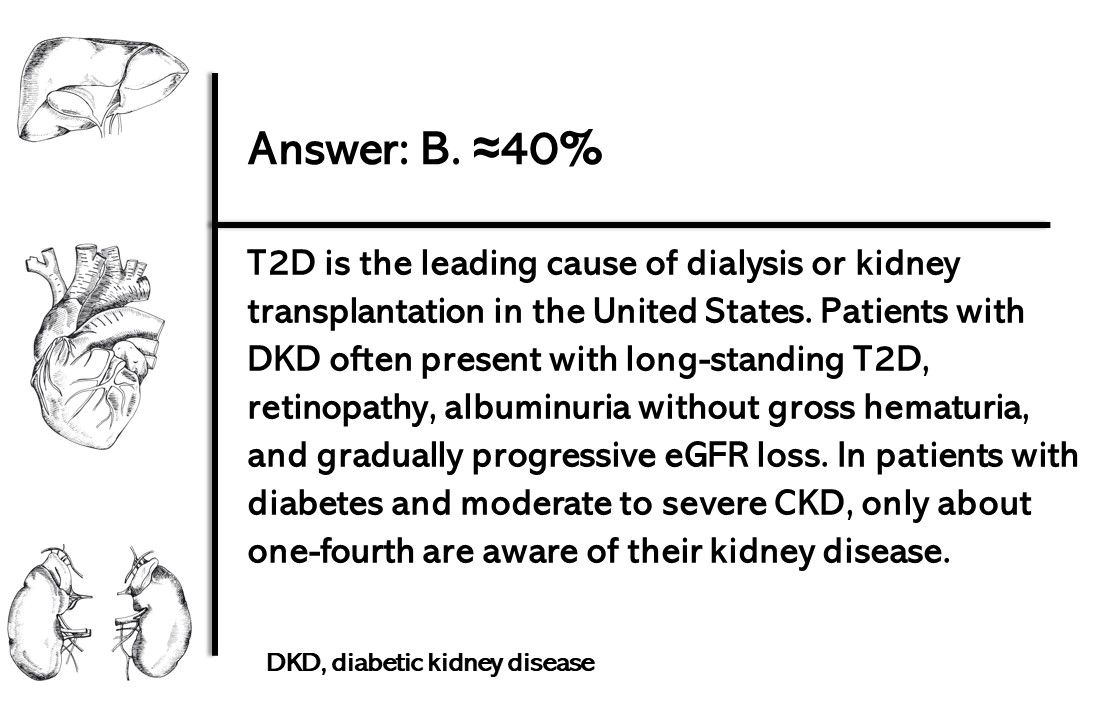
Answer: B. ≈40%. T2D is the leading cause of dialysis or kidney transplantation in the United States. Patients with DKD often present with long-standing T2D, retinopathy, albuminuria without gross hematuria, and gradually progressive eGFR loss.
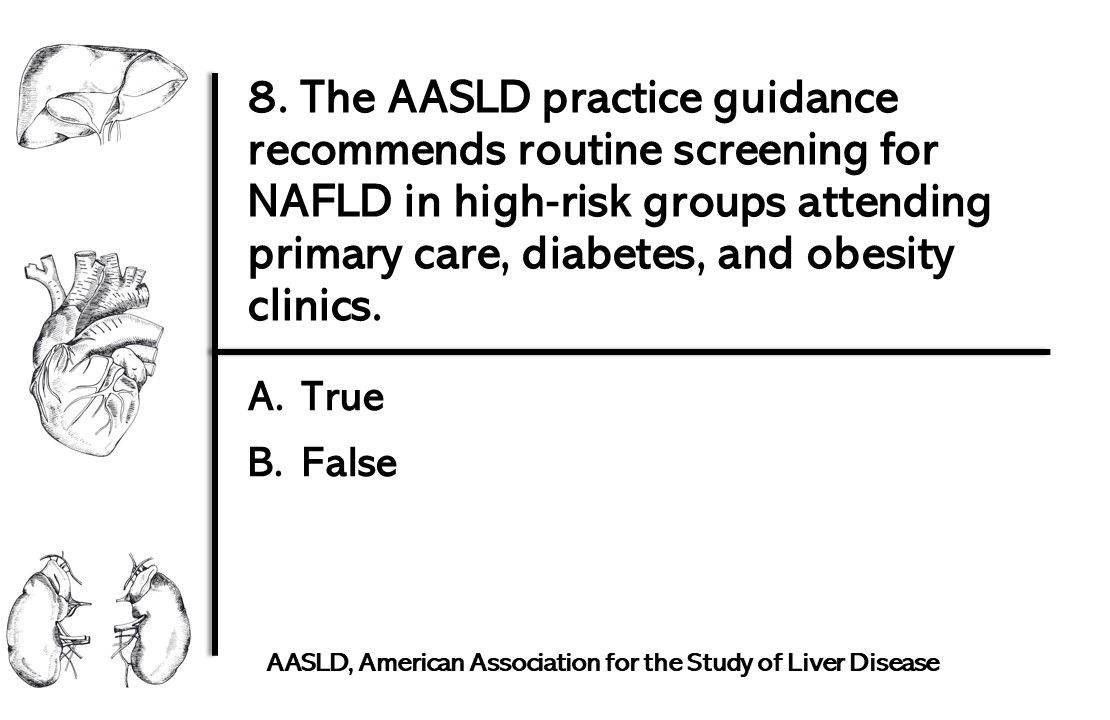
8. The AASLD practice guidance recommends routine screening for NAFLD in high‐risk groups attending primary care, diabetes, and obesity clinics. True or False?
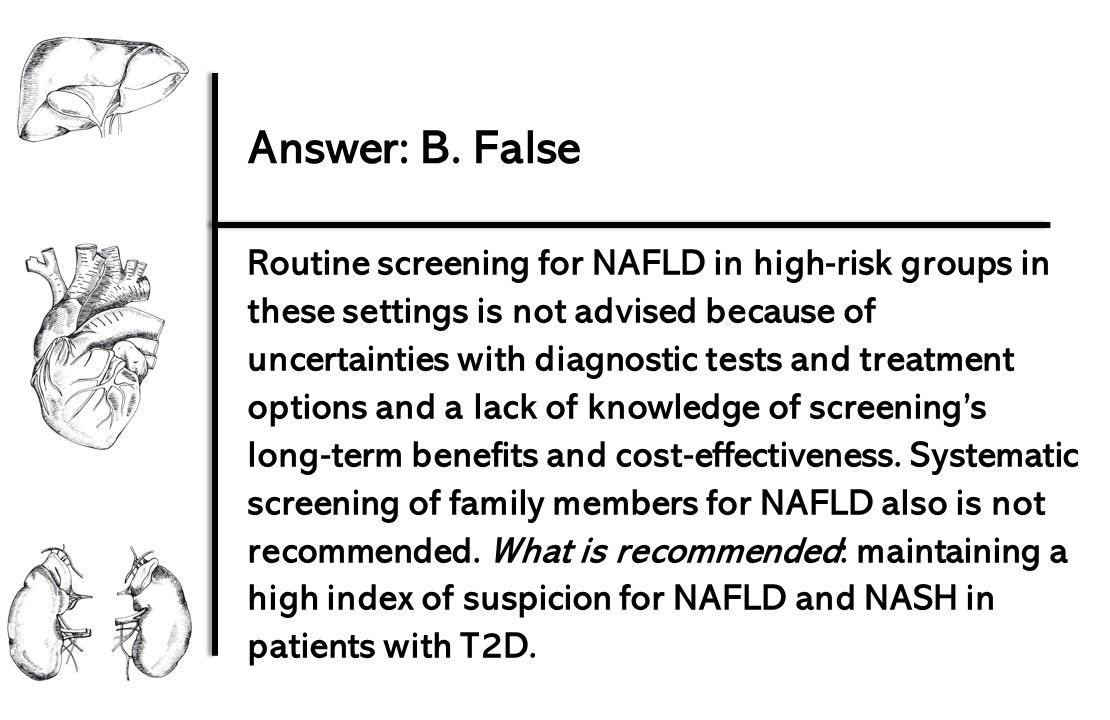
Answer: B. False. Routine screening for NAFLD in high‐risk groups in these settings is not advised because of uncertainties with diagnostic tests and treatment options and a lack of knowledge of screening’s long‐term benefits and cost‐effectiveness

Answer: C. Biopsy‐proven NASH without T2D. Vitamin E administered at 800 IU/d improves liver histology in adults with biopsy‐proven NASH who do not have T2DM and may be considered for these patients.

